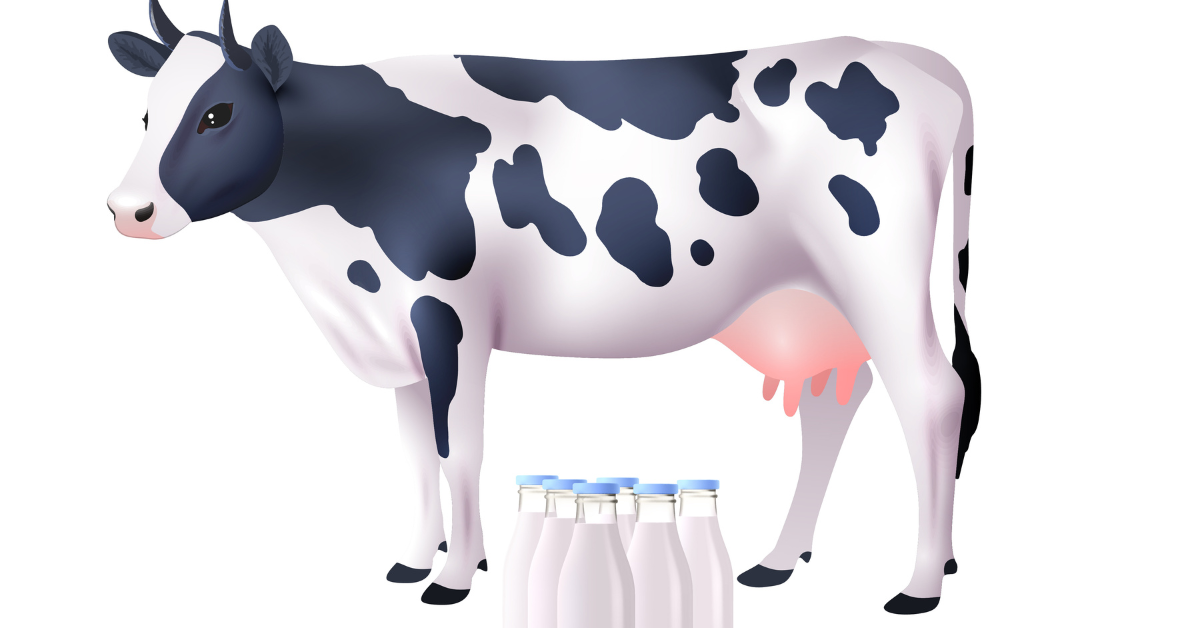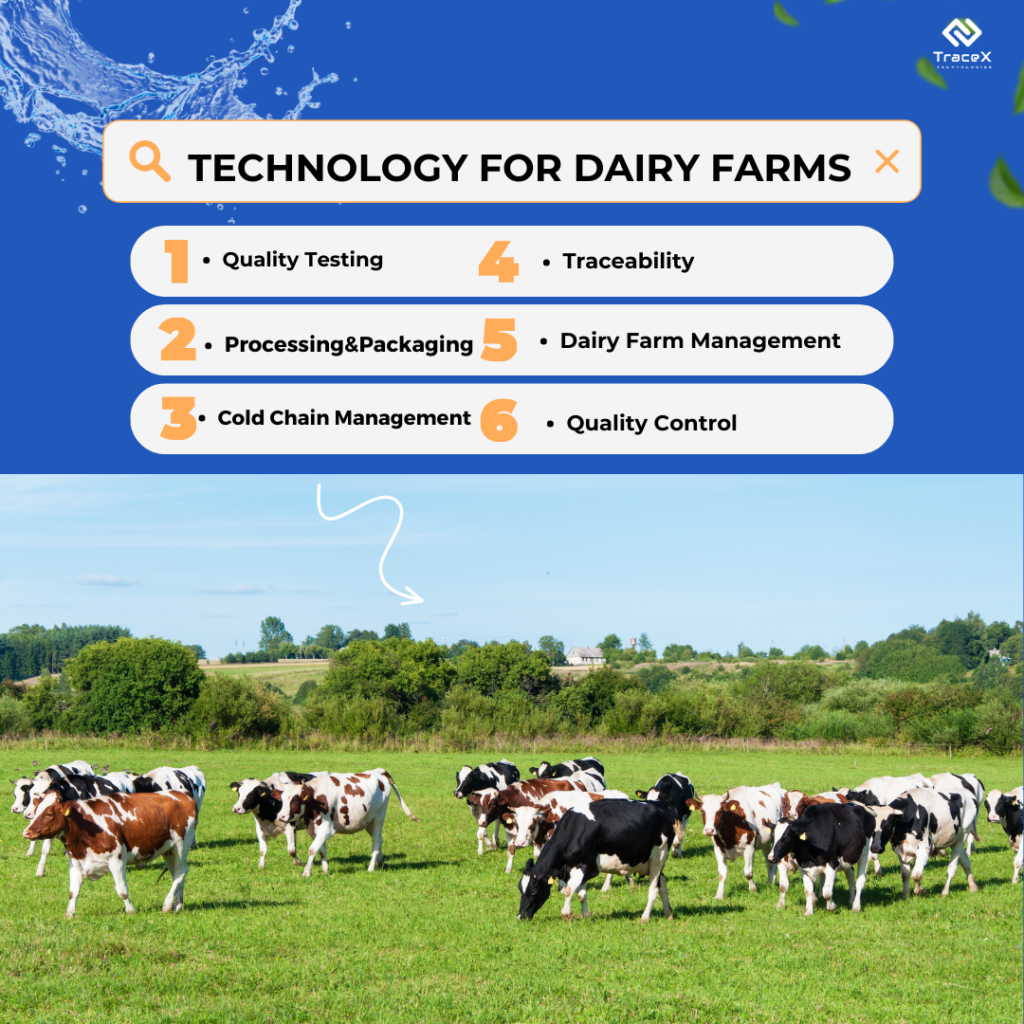Contact: +91 99725 24322 |
Menu
Menu
Quick summary: Explore the key principles and practices of sustainable dairy farming in our comprehensive blog. Discover how dairy farms prioritize environmental stewardship, animal welfare, and community resilience for a more sustainable future

Sustainability in dairy farming refers to practices that strive to meet the industry’s current requirements while preserving future generations’ ability to meet their own. This includes tackling environmental, economic, and social issues such as lowering greenhouse gas emissions, protecting natural resources including water and land, assuring animal welfare, and encouraging community involvement.
Dairy farmers are the guardians of our land, nurturing its soil for future generations. Sustainability isn’t just a buzzword; it’s a way of life for these stewards. They’re constantly innovating, finding ways to save energy, reduce emissions, and protect our precious resources like water.
But it’s not just about their farms. The dairy sector is stepping up to the plate on a global stage, embracing the Sustainable Development Goals (SDGs).
These goals aren’t just words on paper; they’re a roadmap to a better world. And dairy is leading the charge, showcasing how nutrient-rich dairy foods can nourish children, support young women, and sustain the elderly. From improving sustainability to promoting healthier diets, the dairy sector is more than just milk and cheese—it’s a powerhouse for positive change. By embracing the SDGs, they’re not only fostering partnerships but also strengthening food security and nutrition worldwide.
Sustainability is critical to the dairy industry’s long-term viability in the face of rising environmental concerns and customer demand for ethical manufacturing. Adopting sustainable techniques not only decreases environmental effect, combats climate change, and preserves natural resources, but also increases dairy producers’ efficiency and profitability. Furthermore, it promotes resilience to external problems such as changing rules and consumer preferences, while also projecting a positive image of the industry.
Explore how traceability and sustainability are shaping the future of dairy.
Embark on a journey through the evolving landscape of the dairy supply chain.
Greenhouse gas emissions from dairy farms significantly contribute to climate change. The focus for emission reduction lies primarily on methane (CH4) and nitrous oxide (N2O), with some attention on carbon dioxide (CO2). Strategies to reduce emissions include optimizing feeding practices and improving manure management. Additionally, dairy farms can play a role in mitigating greenhouse gas levels by implementing measures that enhance soil carbon sequestration through increasing soil organic matter.
Enhancing soil quality involves maximizing crop yields while also enhancing soil ecosystem functions like water regulation, nutrient cycling, and biodiversity of soil microbes and plants. Nutrient application methods will be adjusted to minimize losses of nitrogen and phosphorus into water and air. Additionally, carbon sequestration in soils plays a crucial role in improving soil quality and mitigating airborne greenhouse gas emissions.
Soil and nutrient management strategies such as rotational grazing and cover cropping help to prevent nutrient runoff and soil erosion. Precision fertiliser application reduces excess nutrient loss while maintaining soil health and fertility.
The utilization of land for cultivating feed for dairy cattle has significant implications for both local and global biodiversity. Research in the dairy industry is increasingly focusing on establishing best practices that support biodiversity conservation. Examples of these practices include minimizing emissions detrimental to natural habitats, reducing the reliance on biocides, and sourcing soy from regions not threatened by deforestation. Collaborating with conservation organizations, engaging in landscape restoration efforts, and safeguarding rare species are also effective strategies to promote biodiversity in dairy farming. Biodiversity protection activities on dairy farms include maintaining natural habitats and creating wildlife corridors. Planting hedgerows and maintaining riparian buffers protects rivers while also promoting biodiversity, resulting in healthy ecosystems.
Water serves multiple functions on the farm, including aiding crop growth, providing drinking water for animals, and facilitating cleaning processes. The primary sustainable goal is to mitigate the farm’s impact on the quality of surface and groundwater. This objective is closely linked to the management of fertilizer, manure, biocides, and other potential sources of water contamination. The secondary objective is to promote water efficiency in both crop and milk production. Water recycling, drip irrigation, and rainwater gathering are all examples of water-saving practices.
Dairy farmers prioritise animal welfare and health by providing a suitable living environment, adequate nourishment, and access to veterinary care. Regular monitoring ensures that health issues are detected and treated early on, boosting the cattle’s general health.
The dairy industry plays a vital role in bolstering the economic stability and resilience of numerous rural communities worldwide, while also providing essential nutrition in various countries. Strengthening dairy supply chains to meet market demands and ensuring the production of safe, nutritious dairy products are pivotal objectives in dairy sector advancement. Integrating sustainability principles, including efficient land resource utilization, is key to fostering robust international dairy chains that drive economic prosperity.
Waste management options include anaerobic digestion, which converts manure into biogas for energy, and composting, which produces nutrient-dense fertiliser. Recycling water for cleaning and irrigation lowers water waste, whereas efficient packaging disposal reduces non-organic waste.
Dairy stakeholders understand the value of offering fair salaries, safe working conditions, and opportunities for community involvement. The industry promotes a good social effect by putting employee well-being and community involvement first.
Meeting the increasing demand for sustainably produced dairy products is a top priority for the business. Consumers are increasingly looking for items that are consistent with their values, including sustainability. Dairy farmers hope to meet changing customer demands and ensure market viability by investing in sustainable practices and honest communication.
Precision agriculture uses data-driven approaches to improve resource efficiency and reduce environmental impacts in dairy farming. Farmers can use advanced technologies such as sensors and GPS to precisely monitor soil conditions, crop growth, and herd health, allowing for tailored interventions to optimise fertiliser and water usage while minimising waste.
Integrating alternative energy sources into dairy operations, such as solar panels and methane digesters, provides long-term options for reducing dependency on fossil fuels. Solar panels generate clean electricity for farms, and biogas digesters turn organic waste into sustainable energy and nutrient-rich fertilisers.
Cattle health, productivity, and reproductive success are influenced by various factors. With wearable animal gadgets resembling human fitness monitors, farmers can now monitor and regulate cattle health, behavior, and reproductive status in real-time, enhancing overall welfare and productivity.
Genetic selection is critical in breeding dairy cattle for increased output and environmental tolerance. Farmers can use selective breeding programmes to prioritise qualities like milk yield, feed efficiency, and disease resistance, enhancing total herd performance while lowering environmental impact.
Nutrient management systems, which include precision feeding and waste management techniques, are critical for reducing nutrient losses and pollution. Precision feeding improves nutrient intake for dairy calves while lowering excess excretion and subsequent nutrient runoff.

TraceX’s farm management solutions play a crucial role in promoting sustainable dairy farming practices through several key mechanisms:
Enhanced Traceability: TraceX provides comprehensive traceability solutions that enable dairy farmers to track the origin and journey of their products from farm to table. This transparency helps ensure accountability throughout the supply chain and encourages adherence to sustainable farming practices.
Optimized Resource Management: By leveraging data analytics and farm management tools, TraceX enables dairy farmers to optimize resource utilization, including water, feed, and energy. This optimization minimizes waste and environmental impact, contributing to overall sustainability efforts.
Compliance Monitoring: The farm management solutions help dairy farmers monitor and adhere to regulatory requirements and industry standards related to sustainability, animal welfare, and environmental conservation. This ensures that farms operate within legal frameworks and meet ethical and environmental benchmarks.
Environmental Impact Assessment: The platform enables dairy farmers to assess and mitigate their environmental footprint by providing tools for monitoring greenhouse gas emissions, water usage, and soil health. This information empowers farmers to make informed decisions to minimize their impact on the environment.
Continuous Improvement: Through data-driven insights and analytics, TraceX facilitates continuous improvement in dairy farming practices. Farmers can identify areas for optimization and innovation, leading to ongoing enhancements in sustainability performance.
To summarise, while economic limits, regulatory impediments, and knowledge shortages provide challenges for the dairy industry in implementing sustainable practices, there are opportunities for growth. Regardless of the initial expenditures, investing in sustainability can result in long-term economic rewards and reduced environmental impact. Regulatory compliance, while difficult, is critical for protecting the environment and maintaining the industry’s long-term survival. Addressing knowledge gaps through education and awareness activities is critical for empowering dairy producers to adopt sustainable practices effectively. Finally, stakeholder engagement, technological innovation, and ongoing education will be critical in developing sustainability in the dairy industry, ensuring a more environmentally responsible and economically viable future.
